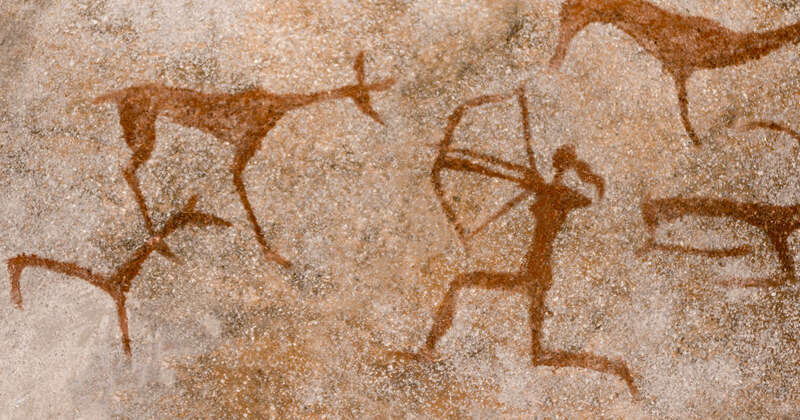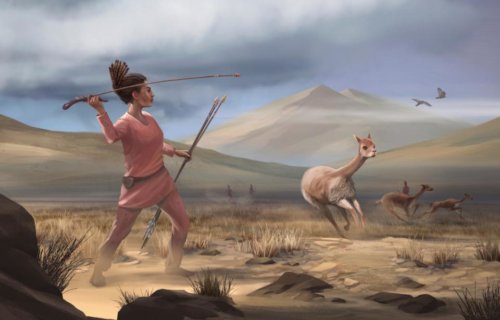NEWARK, Del. — A longstanding belief about prehistoric human societies may need some serious rewriting. Contrary to the widely accepted narrative that men were hunters and women were gatherers in ancient times, University of Delaware researchers suggest that these gendered divisions of labor may not have been as prevalent as once thought.
The study delved into the division of labor based on gender during the Paleolithic era, a period dating back approximately 2.5 million to 12,000 years ago. They conducted a comprehensive review of existing archaeological evidence and literature and found little support for the notion that roles were strictly assigned according to gender. In addition, they explored female physiology and discovered that not only were women physically capable of hunting, but there was limited evidence to suggest that they did hunt.
Researchers found instances of gender equality in ancient tools, diet, art, burials, and anatomy.
“People found things in the past and they just automatically gendered them male and didn’t acknowledge the fact that everyone we found in the past has these markers, whether in their bones or in stone tools that are being placed in their burials,” says study author Sarah Lacy, anthropology professor at the University of Delaware, in a university release.
“We can’t really tell who made what, right? We can’t say, ‘Oh, only males flintknap,’ because there’s no signature left on the stone tool that tells us who made it,” Lacy said, referring to the method by which stone tools were made. “But from what evidence we do have, there appears to be almost no sex differences in roles.’”
The study also examined whether anatomical and physiological differences between men and women might have restricted women from hunting. While men have advantages in activities requiring speed and power, such as sprinting and throwing, women excel in endurance activities, like running, which were crucial for hunting in ancient times. This endurance advantage is attributed to the hormone estrogen, more prominent in women than men, which enhances fat metabolism, provides long-lasting energy, and regulates muscle breakdown.
“When we take a deeper look at the anatomy and the modern physiology and then actually look at the skeletal remains of ancient people, there’s no difference in trauma patterns between males and females, because they’re doing the same activities,” notes Lacy.

During the Paleolithic era, human groups were typically small, leading researchers to question the idea that only part of the group engaged in hunting.
“You live in such a small society. You have to be really, really flexible,” explains Lacy. “Everyone has to be able to pick up any role at any time. It just seems like the obvious thing, but people weren’t taking it that way.”
The notion that men were the primary hunters and women were gatherers gained prominence in 1968 when anthropologists Richard B. Lee and Irven DeVore published “Man the Hunter,” which suggested that hunting played a pivotal role in human evolution. The authors, however, assumed that all hunters were male.
Lacy points to this gender bias as a reason for the widespread acceptance of the concept in academia and popular culture. Over the years, it became ingrained in television cartoons, feature films, museum exhibits, and textbooks, largely ignoring or devaluing the work of female scholars who challenged it.
“There were women who were publishing about this in the ’70s, ’80s and ’90s, but their work kept getting relegated to, ‘Oh, that’s a feminist critique or a feminist approach,’” says Lacy. “This was before any of the work on genetics and a lot of the work on physiology and the role of estrogen had come out. We wanted to both lift back up the arguments that they had already made and add to it all the new stuff.”
Despite the need for more research on the lives of prehistoric people, especially women, Lacy hopes her perspective of labor being divided among both sexes will become the default approach for future research. She highlights that for 3 million years, both men and women participated in subsistence gathering, and the reliance on meat and hunting was a collective effort.
“It’s not something that only men did and that therefore male behavior drove evolution,” concludes Lacy. “What we take as de facto gender roles today are not inherent, do not characterize our ancestors. We were a very egalitarian species for millions of years in many ways.”
The study is published in the journal American Anthropologist.


“.. women excel in endurance activities, like running …” give us a break.
100% of distance records are held by men.
Watch any marathon 70%+ are men.
9,000 years (if accurate) is still not pre-history.
All God myths have a goddess who is a “huntress” but also have fish gods, bull gods and gods who fly.
You just have to re-write history to fit the current stupidity.